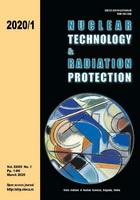
SIMULATION STUDY OF DIRECT CURRENT VACUUM BREAKDOWN AND ITS APPLICATION TO HIGH-GRADIENT ACCELERATING STRUCTURES
Pages: 30-35
Authors: Marija D. Radmilović-Rađenović and Branislav M. RađenovićAbstract
It is well known that radio frequency breakdown is one of the main limitations in high frequency accelerators. Similarities have been detected between breakdowns in direct current vacuum gaps and those in superconducting radio frequency cavities. Therefore, cavity breakdowns due to electric field phenomena can be understood by studying direct current vacuum breakdowns. Significant irregularity of a surface and a variety of involved processes objectively stipulate a number of factors which may lead to a breakdown. In this paper, the effects of surface conditions, accelerator gradient, pulse length, and operating frequency on the breakdown have been studied by using COMSOL simulation package. It was found that the dependence of breakdown rate on accelerating gradient and pulse length follows scaling laws. Based on the time evolutions of electron density and the potential in cone-cylinder electrode configuration at the pressure of 0.1 Pa, the time scale of a vacuum breakdown has been established. It was also confirmed that the emission from an electrode surface can be regarded as a major factor leading to electrical breakdown in vacuum. The obtained results could be very useful in high-gradient accelerating structures.
Key words: accelerator, cavity, breakdown, COMSOL
FULL PAPER IN PDF FORMAT (983 KB)
